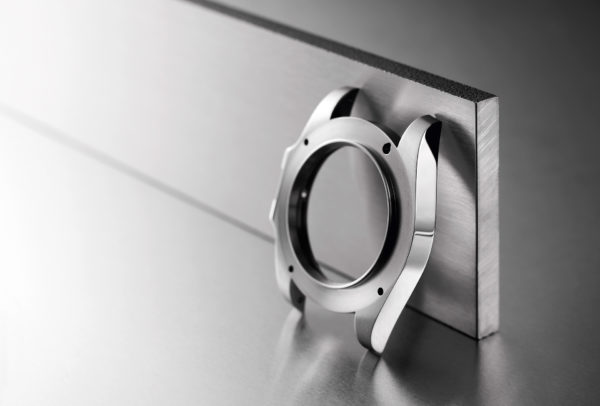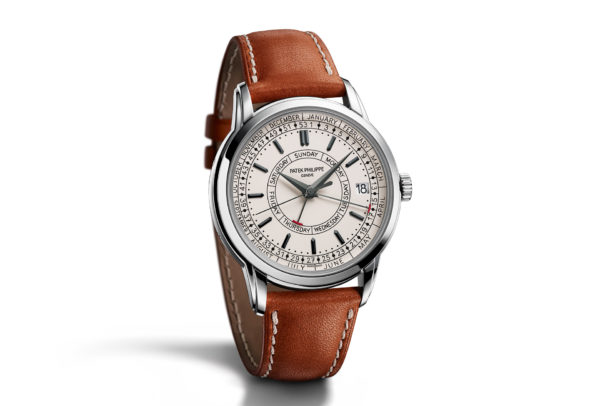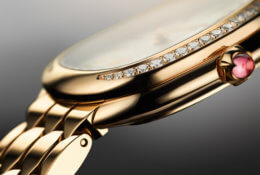In a previous article, we learned more about gold and platinum, two of the metals used by watchmakers and why they are the aristocrats of the metal world. Now it’s the turn of bronze, silver, titanium and stainless steel to show off their qualities. Less regal, they are no less worthy. Indeed, when it comes to a watch’s habillage (the external parts, in particular the case), very few metals make the grade, as Andreas Mortensen, director of the Laboratory for Mechanical Metallurgy at the Federal Institute of Technology (EPFL) in Lausanne, reminds us: “A metal has to resist friction and variations in temperature. It can’t be prone to tarnishing, must be non-corrosive, suitable for machining and, obviously, non-toxic.”

Let’s face it: nobody wants a watch case that looks like a rusty kitchen strainer, hence the need to form a barrier against corrosion. “There is enough chromium in stainless steel to form a layer of chromium oxide and prevent the iron in the alloy from rusting,” Dr Mortensen explains. Similarly, oxidation forms a protective layer on the surface of titanium and copper (the main component of bronze). Silver doesn’t oxidize but does react to hydrogen sulphide in the air or if it comes into contact with objects that contain sulphur, causing it to blacken or tarnish. “Which is why it’s never a good idea to eat an egg with a silver spoon,” says Andreas Mortensen with a smile.
Another means of preserving the appearance or mechanical stability of a metal is to coat it although, as Dr Mortensen explains, “whereas a natural layer of oxide will always reform, a coating cannot renew itself. A scratch remains a scratch, exposing the metal underneath.”
The inimitable patina of bronze
An alloy of (mainly) copper and tin, bronze has the advantage of hardness and that it can be cast. It is, however, heavier than steel and a better conductor of heat. Manufacturers generally prefer bronze for components that are subject to friction, such as bearings, although some are happy to exhibit its colour and, more so, unique patina on a case; not least Gérald Genta and his groundbreaking Gefica. For its Pilot Type 20 Bronze, Zenith explains how each case is first treated then a special finish applied that gives every piece its own, unique patina. To ensure this patina doesn’t end up leaving a lovely green circle on the wrist, most bronze cases are fitted with a titanium back.
Sensitive silver
Silver is a noble metal that has been used to make jewellery and decorative items since Antiquity. Because it reacts to sulphur, it is either plated with gold, treated or combined with other metals – as in watchmaking, which uses alloys of generally 92.5% silver and 7.5% another metal. Zenith’s Pilot Type 20 Silver is hand-polished then treated to prevent it from tarnishing. Silver is a popular choice for making flinqué dials (enamel on top of guillochage) or gold-plated for cases. These various treatments and alloys also attenuate the very real “garlicky” smell that appears when silver comes into contact with skin molecules (a similar reaction is observed with copper, hence bronze).
Titanium's fiery temperament
Lightweight because of its low density, noble because of its resistance to corrosion and erosion, titanium is protected by its own oxides. In fact no other metal produces oxides as fast, without being toxic. “Titanium stands up well to deformation and can be used to make small components,” says Denis Flageollet, watchmaker and co-founder of De Béthune. Titanium’s properties make it a good match for the qualities we expect from a sport watch; it also produces a clear sound, making it ideal for alarms and repeaters. Titanium’s natural oxidation can be augmented through heat treatment, creating different colours depending on the amount of oxide there is. “The thickness of the oxide layer, and how much light bounces off it, determines the colour, from blue or light blue to yellow, brown, even violet,” continues Denis Flageollet. De Bethune’s DB28 Yellow Tones and DB28 Kind of Blue Tourbillon are both examples of different colours of oxidized titanium.
Titanium’s fiery temperament really comes to the fore when machined. “Because titanium has a fairly low ignition point, it’s important to always monitor tool wear,” says Francis Simonnet, director of Les Boîtiers de Genève, a case manufacturer. “All it takes is one spark to set a machine alight.” Rest assured, your watch isn’t about to burst into flames on your wrist: this happens only when titanium shavings are heated and spontaneously ignite. In contrast, titanium has a melting point of more than 1,600°C and is therefore used whenever a high level of heat-resistance is required.
The many talents of stainless steel
What’s not to like about wonderful, multi-tasking steel? It is corrosion-resistant, unbreakable, inexpensive and hard-wearing. It can be polished, hardened, shaped or satin-finished. Naturally grey, it can also be blackened. Once melted, steel amalgamates well and therefore provides a good surface for decorative finishes. The relationship between corrosion-resistance and the presence of chromium in a steel alloy was reported in 1911. Since then, steel has been alloyed countless times. Rolex’s Oystersteel, for example, is the same 904L grade as the stainless steel used in high technology as well as in the aerospace and chemical industries for its high corrosion-resistance. It also “offers an exceptional finish once polished,” adds the brand. So is steel Mr. Perfect? According to Patek Philippe, “constraints come from the metal itself, in particular the complex adjustments it implies. For example, the Calatrava Weekly Calendar Ref. 5212A is made from steel with a snap bezel and snap back. Despite all our experience with this type of fixation in gold, it took several trial pieces before we attained the same optimal result in steel.”

So, which metal best suits your wrist (and pocket)? Will it be gold, platinum, steel, titanium, silver or bronze? Whichever it is, remember to treat it with the respect it deserves!



















